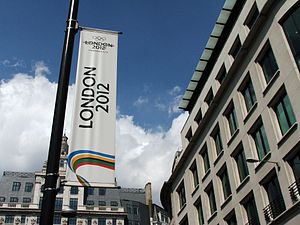So far I’ve spent a great deal of effort highlighting the Olympic Games as catalyst for urban redevelopment, transportation and infrastructure investments, and so on. I would be remiss, of course, if I did not point out the negative externalities that the Games can cause. Note that a negative externality is an action of a product on consumers that imposes a negative side effect on a third-party. Such examples may include pollution, climate change, and tragedy of the commons situations.
Negative externalities, in the context of the Olympic Games, can generally impact a host city in three distinct ways: financial, structural and image (Source: Preuss). When discussing finance, I’d be remiss not to mention the 1976 Montreal Olympics, a financial boondoggle that took 30 years to pay off. Montreal is the case in point that when the Olympic profits are smaller than debts, often the host city is making up the difference, financially.
Structural externalities include hard and soft factors. The hard factors are the physical infrastructure developed for the Games, including transportation, telecommunications, tourism, and athletic stadiums. When the cost of developing this infrastructure is too high, such as in Montreal, the host city suffers. The financial liabilities that Montreal faced (and Munich to a lesser extent) was from high investments in transport and sporting infrastructure. In other cases, such as Athens, the sporting infrastructure developed for the Games was vastly underutilized due to lack of demand after the Games.
The image of a host city can also suffer as a result of the Games. While rare, Atlanta has been regarded in many ways to have negatively suffered, largely in the fact that its traffic situation was, and is, horrific. Additionally, security came to be a major issue that damaged Atlanta in the aftermath of the Games.
The above cases represent negative externalities that can happen after the Games have passed. In the case of London, however, one can argue that negative externalities from the Games have already started to appear.
One such negative externality is the scarcity of land in London, generally, and in the London Borough of Newham, specifically, where rising rents due to lack of supply and the significant infrastructure and development investments in and around Olympic Park. In this case the shared resource is land and its lack of availability is causing the Borough to consider new ways of ameliorating the problem: by exporting the poor. It has been argued by some scholars of the Olympics, that certain groups, such as the underclass, the homeless and low-cost rental groups, can be made worse off as a result of an Olympic Games. Its been contended that Olympic legacy benefits accrue to the already privileged sectors of the population’ while the disadvantaged bear a disproportionate share of the burden.
After the Games, keep a close watch on whether the sporting infrastructure is used and whether various transport infrastructure pays off. In a future post, we’ll highlight what some of those investments are.


disqus_aZnrcLavNC
sideman
disqus_aZnrcLavNC
n egro
disqus_aZnrcLavNC
fag
gnnfndfnmg
man doe